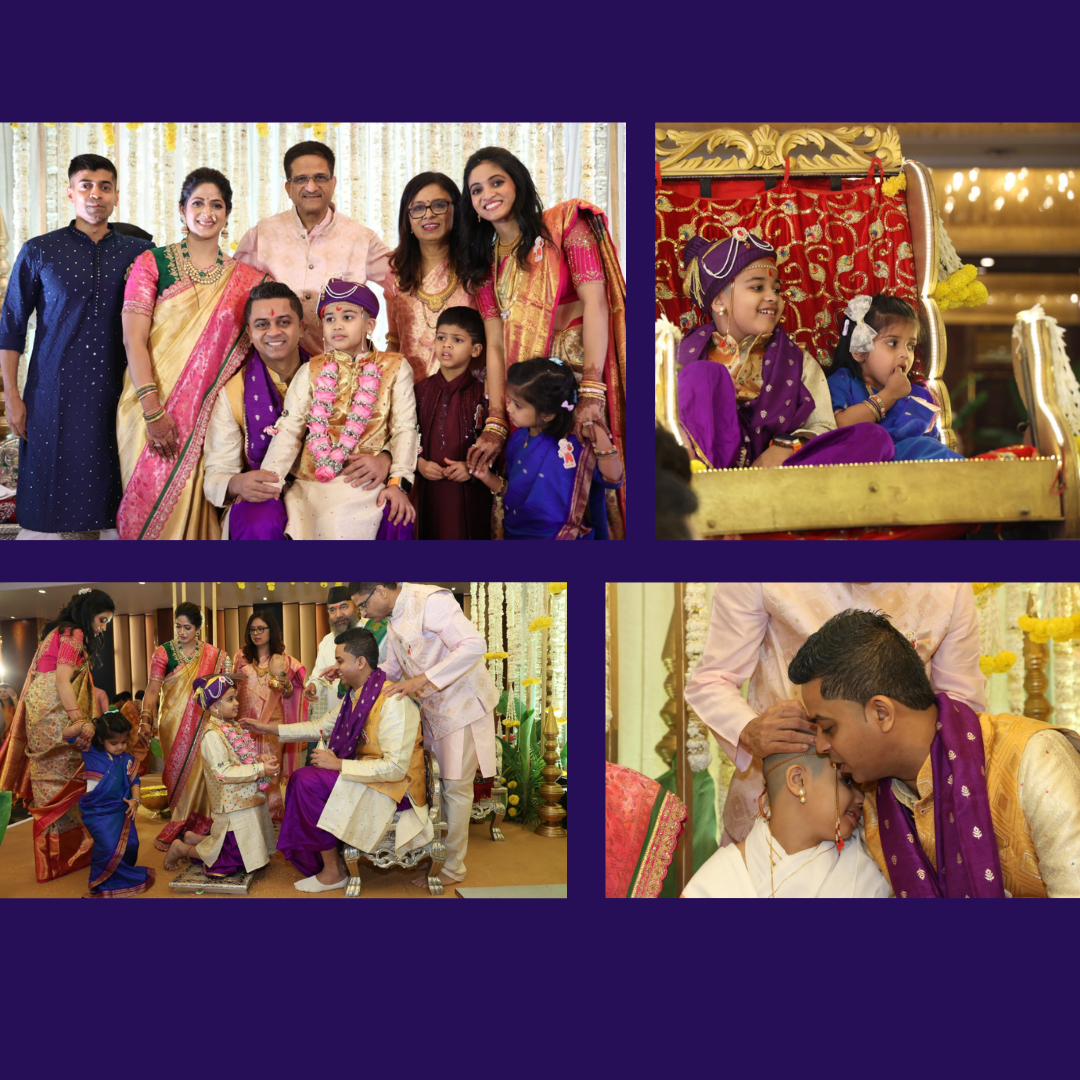
Since the time we become parents, all our actions are focused on our children whether it’s their education or their marriage. However, beyond the material wealth we create for our children, the Indian rituals and traditions we practice also play an essential part in a child’s life, imbuing them with sanskars! The importance of these rituals can be gauged from the fact that Indian parents save their life time ‘Poonji’ or savings for these events regardless of whether they are rich or poor.
As I was born and raised in the state of Maharashtra, I am more familiar with the Maharashtrian traditions, though I am always happy to partake in rituals hosted by my friends from other states of India too.
One of the first rituals held when a child is born is the Barsaa or the naming ceremony. It is usually performed on the 12th day of birth of the child. Atya that is the father’s sister, announces the baby’s name, and ‘Batassa,’ which is a type of sugar candy, is distributed to the relatives and guests who attend the Barsa ceremony. Now-a-days exotic lunches and dinners with sweets are distributed during such a ceremony.
The next ceremony in the life of a son is the ‘Munja’ or the thread ceremony. Munja or Yagnopavit Sanskar or Upnayan Sanskar is performed to a boy who enters the age of 8. After a ritual bath, the boy is dressed as an ascetic and brought before his guru or the personal spiritual guide. The thread, consisting of a loop made of three symbolically knotted and twisted strands of cotton cord, is replaced regularly so that it is worn throughout his lifetime, generally over the left shoulder and diagonally across the chest to the right hip. It identifies the wearer as dvija, or “twice-born,” the second birth understood as having taken place when the Guru imparted to the student the “Gayatri” mantra, a sacred verse of the Rigveda. In this ceremony the father imparts this mantra by whispering in the son’s ears.
We recently performed ‘Munja’ of our grandson and it was such a satisfying ritual of passing on the family traditions to him.
There are several other rituals too that are fun ways of celebrating the seasons. One is Makar Sankranti, which is celebrated throughout India in the month of January. Also, at the time of Makar Sankranti, a special ceremony was organized for kids aged one to five years called Bor (berries) Nahan (bath), meaning bath in berries. Bor nahan is a fun-filled Maharashtrian tradition performed to nurture the child’s immune system. Although it is believed that performing Bor nahan keeps evil away from kids, this tradition is done so that the child gets good health.
Subsequently, several rituals are performed during the weddings, such as Halad Chadavane, Sakharpuda, Kanyadaan, and Saptapadi, among many others.
In the first year of marriage, there are many rituals performed for the newly wed bride. In the month of ‘Shravan’ which falls in August, an interesting ritual called ‘Mangla Gaur’ is performed for the newly wed bride where other women are invited and a lot of traditional games like Phugadi, Zhimma, etc are played by women. The other important function for the newly-wed couple is the ‘Diwal san’ performed during Diwali that falls in the first year of the marriage. Here gold ornaments are given to the couple and relatives are invited for a sumptuous Diwali lunch.
Though the names of traditional rituals might be different, when you delve deeper into the intricacies of each of them, you will find that all over India, no matter what the state is, we are one in our practices. This is true unity in diversity.
When we come together as a family to celebrate the rituals, we may not realize, but we become the upholders of these traditions, thus instilling Sanskars in our children and enriching their lives.
In the present times, when families are becoming smaller, it becomes even more critical for us to unite with our extended families and practice these rituals so that our children understand the value of this unfathomable wealth.